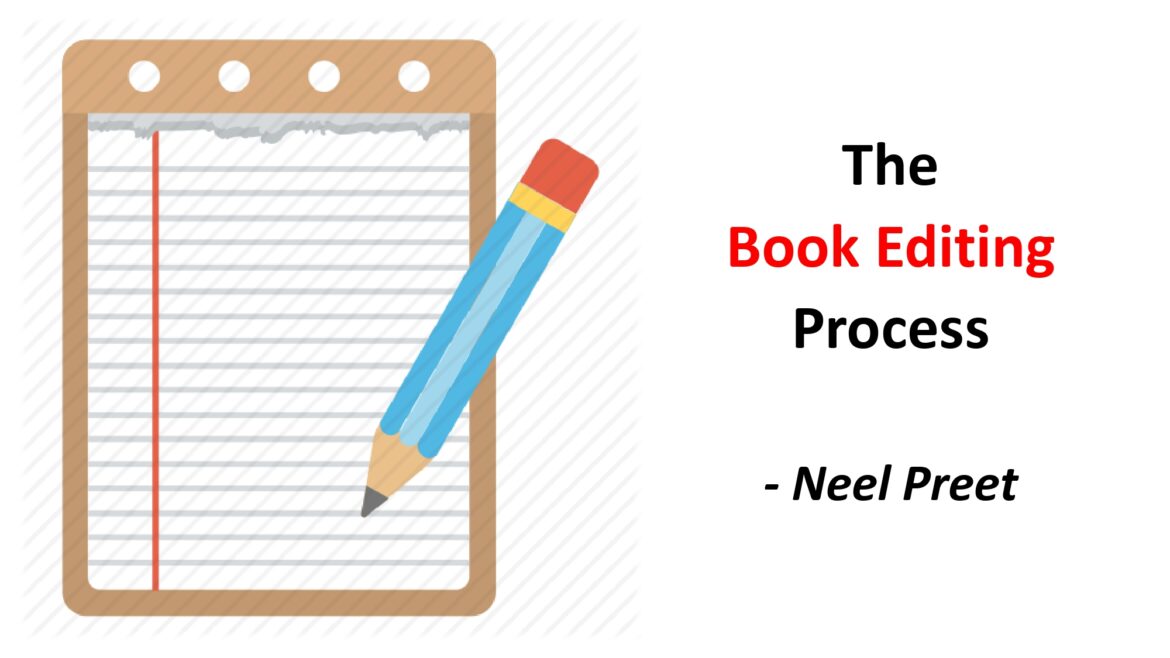The step where the process of ‘Book Editing’ is required to give a final shape to the Author’s Manuscript plays a very crucial role in the publishing process of a book. If you are someone related or keeping interest in the literary field then you too might have heard about the perks of good book editing. However, it is not only about the benefits of the Book Editing as there is so much more involved in this process!
Well, before exploring the various relevance of Book Editing, we must understand, what is book editing actually! So, one can say that the Book Editing is the process of preparing a book for publication, either traditional or self-published. The book editing process involves developmental editing, copyediting, and proofreading. Moreover, the book editing process is highly personal and it is important to know what you are getting into before you begin.
According to James M. Ranson, Wall Street Journal bestselling editor and ghostwriter, “Editing is the (sometimes missing) step between writing and publishing a book. It’s the art and science of making a text better than the author thought it could be, the process of uniting expertise in a topic with expertise in the written word to make something better than either could be by itself.”
The Book Editing is not a very complex process, if it is done by following the correct measures. Therefore, let’s take a look over the ‘Basic Steps’ involved in the process of book editing –
1) Initial Step: After self-editing, the first step of the editing process is an editorial review. The goal of this review is to determine the level of editing a manuscript needs before it is ready to be published. There are several different types of edits and some manuscripts will need them all, but some will not, so this first step will help determine which edits would be most useful for your manuscript.
2) Time Duration: Your editorial review should be returned within seven business days, but every editor is different, so you will have to work out your agreement based on whom you are working with. Beyond the editorial review, when it comes to editing, a good rule of thumb, whether it is a round of content editing or copyediting is two weeks for every 50,000 words. Between rounds you will be given time to review your manuscript.
3) Acceptance of Changes: Many editors use Microsoft Word’s “track changes” feature to edit manuscripts; they also insert editorial comments throughout the manuscript. It is up to you whether to accept or reject any given “track change” edit. There are common writing mistakes you should avoid at all costs, but there is also a time when you can make a case for your writing intuition to win out over structure.
Now, let’s try to obtain the answers of some other ‘Basic Questions’ related to the process of book editing –
1) Does Genre Makes A Difference: Yes, since many book editing services make a distinction between fiction and nonfiction editors with the editors further specializing in specific genres from there. This is not to say an editor whose niche is fantasy will not be able to edit a mystery, just that they know their editors’ strengths. This is an important distinction. One editor’s wheelhouse may contain self-help, fashion, and food; another might handle the bulk of an editing service’s YA books; another’s specialty could be science fiction; still another may work primarily with memoirs.
2) Is 100% Accuracy Guaranteed: No, the editing and proofreading accomplish different things! A content editor focuses on a manuscript’s overall structure, whereas a copyeditor focuses on things like grammar, spelling, and punctuation. It is always best to follow a content edit with a copyedit, just as it is always best to follow a copyedit with proofreading. You will likely review a manuscript’s edits using track changes. Inherently there is a margin of error, not necessarily on the side of the copyeditor but also by your reviewing the copyeditor’s edits. When it comes to proofreading, a final proofread is always recommended on an advanced reader copy.
Well now, since we have covered all the basic points related to the overall process of book editing, then let us understand the ‘Importance of Book Editing’ before concluding this write up –
1) Revenue Generation: If your goal is to have a revenue stream from the sale of your book then, yes, you need an impartial and trusted editor. What our experience tells us is this: no manuscript is perfect; every writer needs editing; and, if you want to be a professional writer, then it is important to work with a professional editor.
2) Shaping the Manuscript: Book Editing is the activity that takes one person’s message and makes it accessible to people who have never heard of that message before. It is polishing, refining, grinding, chipping away at a text until everything that is not truly part of it is gone. It is quality control for ideas. In addition, if you want a high-quality book with clear, commanding content, it is 100% necessary.
Written By NEEL PREET – Author of the Books, Voice From The East (2016); Journey With Time Place And Circumstances (2018) & Indian Defence Files (2021).



